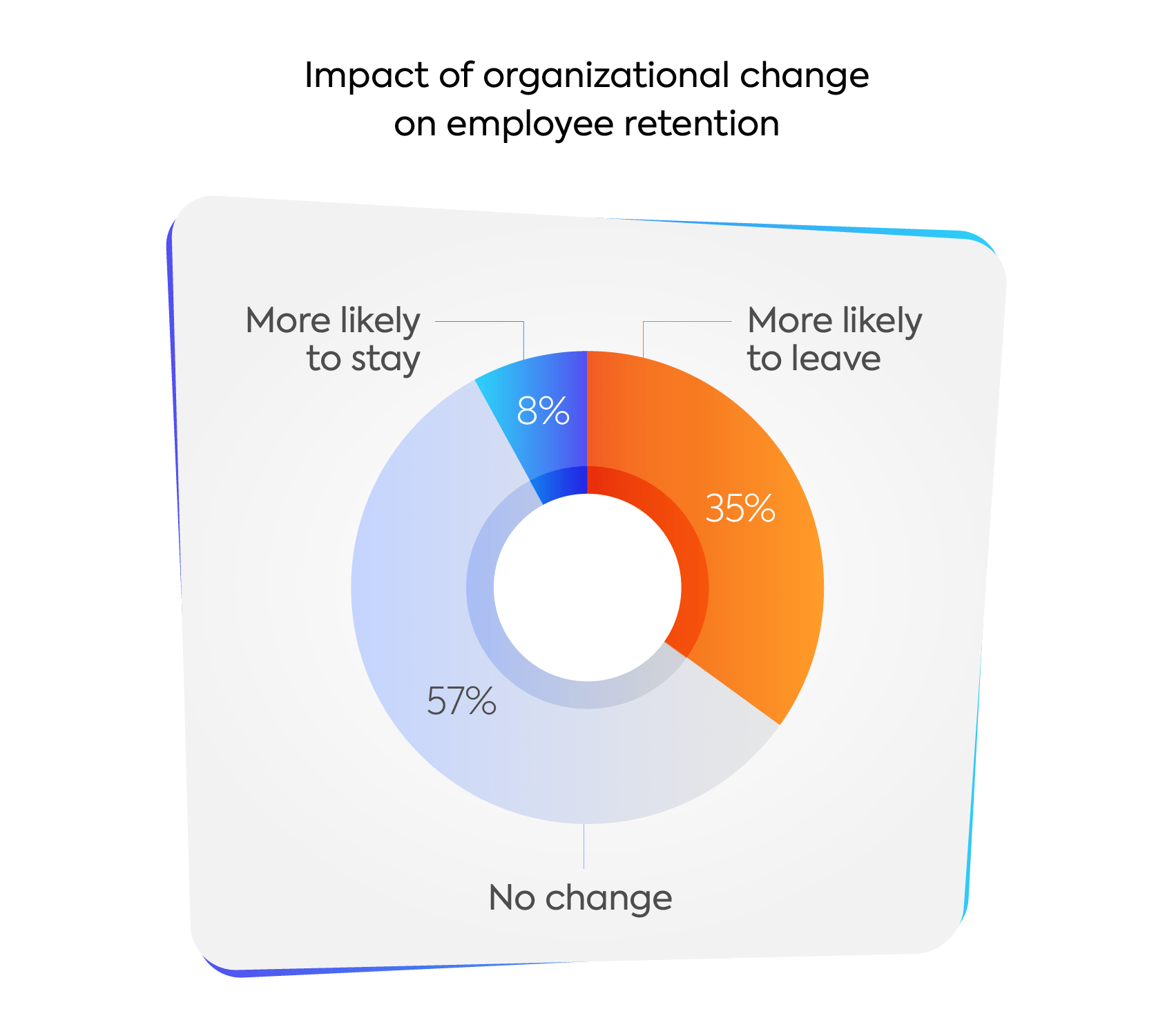
Research shows when change happens in the workplace, trust in management falls

Change management projects are essential to business success but remain one of the hardest things to achieve, with new research suggesting organisations are still getting it wrong when it comes to their teams.
The findings, released by TalentLMS and WorkTango, show that half of all employees (50%) said their trust in leadership was negatively impacted by change – with 64% saying they reported increased anxiety.
“Leaders say the biggest barriers to change aren’t tools or systems. They’re human and emotional. Low morale and engagement, employee resistance, and poor communication are dragging down transformation efforts,” the report states.
The research also found that more than one third of employees (35%) are more likely to leave their job in the face of change – highlighting the need for greater buy-in from all levels of a business.

So, why are businesses still failing to implement change programs effectively? Professor Herman Tse, from the Department of Management at Monash University, told HRD the answer lies in not properly assessing all aspects of the business affected.
“They [business leaders] neglect or overlook the human size of transformation. We’re very complicated creatures, and we need to evolve to meet the challenges of change. Maybe it’s cutting a certain benefit, reducing the size of a team, or even just changing someone’s responsibilities – that creates fear," he said.
“People are more likely to resist change at first than accept it straight away, that’s natural. That's why it's a clear vision, explain the change process, get the people involved. Is very important, because they know exactly, you know why this going to go, how this going to happen."
Tse noted the importance of “clear direction, strong leadership commitment and meaningful engagement” in implementing change
“Leaders often find it very difficult to create or articulate a compelling vision to demonstrate the necessary commitment to the change process. That’s why there’s often a sense of confusion, uncertainty, and anxiety amongst employees," he said.
“Organisations sometimes overlook the cultural and behavioural shift when change occurs – which can make it hard to create a lasting impact without a clear and strong management plan."
Tse suggested ensuring strong and transparent communication across all levels of a business undergoing change to reduce “negative energy” to the future.
“Organisations need to first think about full commitment from all senior executives. After that, they need to create a clear, compelling vision and strategies to how they going to achieve that change. Then they can think about using different techniques, maybe town hall meetings or information case to get people on board.”
When you take employees on the change journey, it is only then, according to Tse, they feel involved and can trust the change process – saying transparency in communication will pay dividends in the long-run.
“Imagine being told, out of nowhere, your team was being reduced, or you were being made redundant. Your back would almost instantly be against the wall – because it’s come out of nowhere. That’s understandable, you’re going to be in shock. If people were made aware, maybe they could’ve offered their own input – or even collaborated to try and fix the problem.”
Whilst employee engagement can reduce during a process of change, there is also a long-standing viewpoint that organisational change projects fail on their own accord – adding to the potential anxiety felt by employees.
Findings from McKinsey & Company, released more than a decade ago, highlights the sentiment that 70% of change programs fail to achieve their goals because of employee resistance and lack of management support.
“When people are truly invested in change it is 30 percent more likely to stick,” the research said.